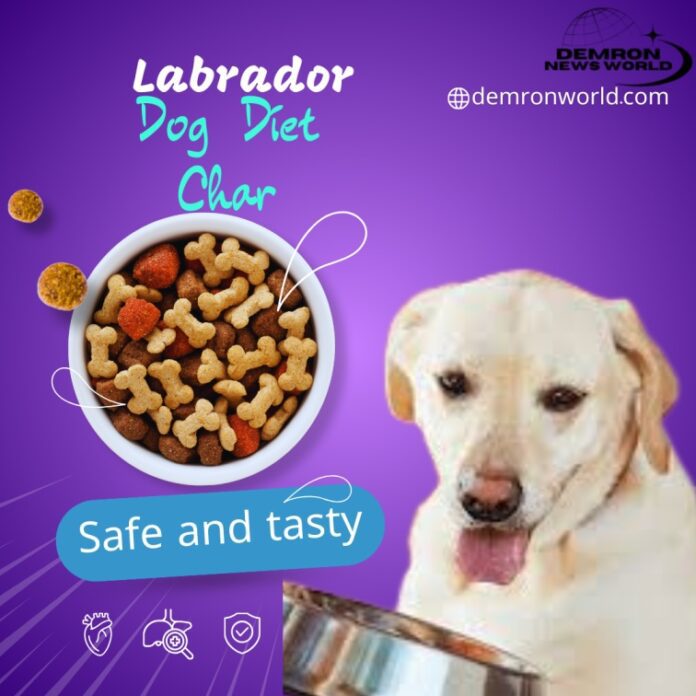All Labrador lovers should remember that a balanced diet is essential for their health and fitness. This article is completely written on how to feed your furry friend the right way and how to feed him the right way. By reading this, you can feed your Labrador dog the right way. When you read this, you will get every little piece of information that will be very useful for you, so let’s take a look at every detail.
Understanding the Labrador Retriever’s Nutritional Needs
Labrador retrievers are lively, sociable, and courageous members of the canine family. Therefore, their daily energy requirements as well as their health condition should be taken into consideration while planning their food. Therefore, Labrador’s food should include proteins, fats, carbohydrates, vitamins,s and minerals. Do not give them too many fillers and artificial additives.
The main proportions of Labrador’s nutrition include:
Protein: Chicken and fish feed will help in building muscles.
Carbohydrates: Brown rice, sweet potatoes, and oats are rich in energy and hence make good sources.
Fats: Fish oil or flaxseed would be the choice for healthy skin and a smooth coat.
Vitamins and minerals: Vegetables like carrots and spinach are more useful.
Labrador Dog Diet Chart by Age
With the help of the Labrador growth chart, its owner will be able to figure out how much a Labrador puppy should be fed as well as how frequently it should be fed.
| Age (Months) | Meals Per Day | Food Type | Daily Portion |
| 0-3 | 4 | Puppy kibble, milk replacer | 150-200g |
| 3-6 | 3 | High-protein puppy food | 250-300g |
| 6-12 | 2-3 | Balanced puppy diet | 300-400g |
| 12+ (Adult | 2 | Adult dog food, natural diet | 400-450g |
Labrador Puppy Feeding Chart
The proper diet at the puppy stage ensures a healthy future for your Labrador. Here’s a detailed food chart for Labrador puppies:
Weeks 0-4: Milk from the mother is the lifeline for puppies. If that’s not possible, a vet-approved milk formula is a great substitute.
Weeks 4-8: Begin with wet puppy food while keeping the portions small and frequently giving them.
3-6 Months: Start using high protein puppy formulas in dry kibble after removing the alfalfa and lucerne.
6-12 Months: Start gradually using adult food.
Pro Tip: Changing the food all of a sudden can cause a stomach upset to the puppy, make sure to avoid that and do it slowly.
Labrador Feeding Chart for Adults
As Labradors grow up, their food preferences change. They require less Energy but still need to have a well-balanced meal. Here’s a Labrador retriever diet for adults:
| Weight (kg) | Activity Level | Daily Calorie Needs | Protein Requirement |
| 25-30 | Low | 1200-1400 | 20% |
| 30-35 | Moderate | 1500-1800 | 22% |
| 35-40 | High | 2000+ | 25% |
Feed adult Labradors two times a day, in the morning and evening. Add some treats, but they shouldn’t exceed 10% of the overall calorie intake for the day.
Senior Labrador Feeding Recommendations
Here’s an adjusted Labrador food chart for aging Labradors, as they will become sloth-like and require less energy as calories:
Joint-Care Support: Include foods that provide sufficient glucosamine.
Low-Energy Intake: Suppress weight gain.
Regular Check-ups: Look out for significant health changes.
Homemade Labrador Food Diet
Making the Lab’s diet yourself guarantees the whole foods are fresh and nutritional deficiencies or excessive fat-processors don’t corrupt your Lab’s diet, here is a home-made food recipe for a Labrador Retriever:
Ingredients:
300g shredded chicken
1 cup of cooked brown rice
1/2 cup of mixed vegetables (carrots, peas)
1 tablespoon of fish oil
Preparation:
Combine everything in a bowl and feed the Lab according to its food portion as shown on a typical Labrador’s diet chart.
Foods to Avoid for Labradors
There are some toxic foods for Labradors and these are:
- Chocolate
- Grapes and raisins
- Onions and garlic
- Fatty cuts of meat
- Cooked bone
Tips for Maintaining a Healthy Labrador Diet
- Adhere to Meal Schedules: This is what is referred to as consistency.
- Maintain Weight: If your Labrador puts on weight or loses weight, adjust the portions.
- Water Supply: Ensure that clean water is available at all times.
- Ask Your Piso Veterinarian: the Labrador food diet should be adjusted to various health issues.
Conclusion
Providing food for your Labrador Retriever should be done with a lot of care since it will determine the dog’s health, level of joy, and lifespan. This means that by using the Labrador dog diet chart you can be sure of feeding it on the right diet about its age, weight, and activity level. Use fresh and good ingredients, be keen on the portions you offer, and consult your veterinarian on any changes it will be okay to make. A fed Labrador is surely a happy Labrador and one that will be with you for many a year.
FAQs
Puppies: 3-4 times a day. Adults: Twice daily.
In higher quality, and definitely balanced meals that are constituted with lean proteins and the right carbohydrates.
Raw diets are certainly possible; however, they should always be recommended by a veterinarian due to such possibilities.
that is their nature and genetics playing on them but it’s more helpful to know why we often see this behavior in Labradors.
Labradors are known to have an issue with overeating. Avoid feeding your labrador in any other way other than that provided in the labrador feeding chart.
